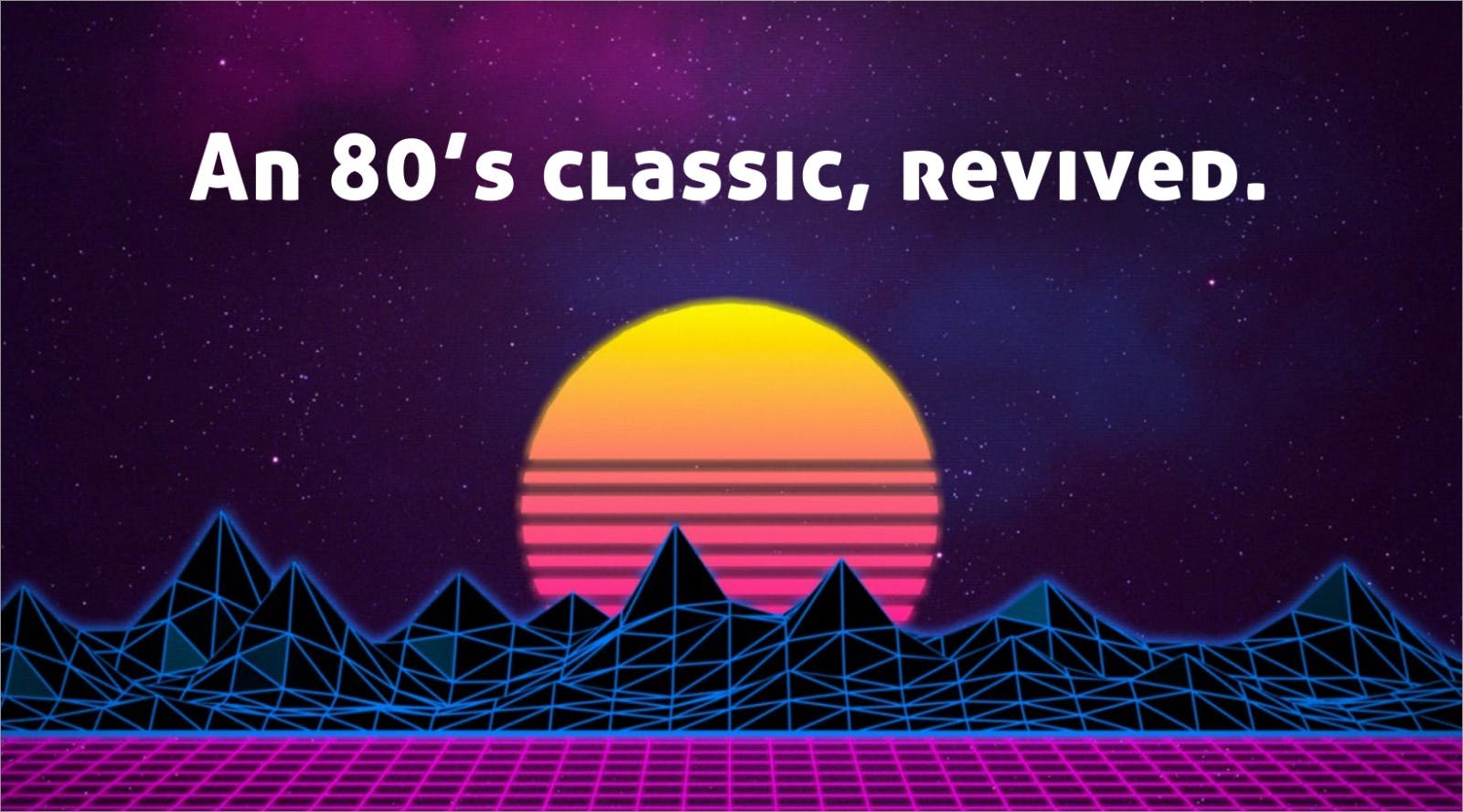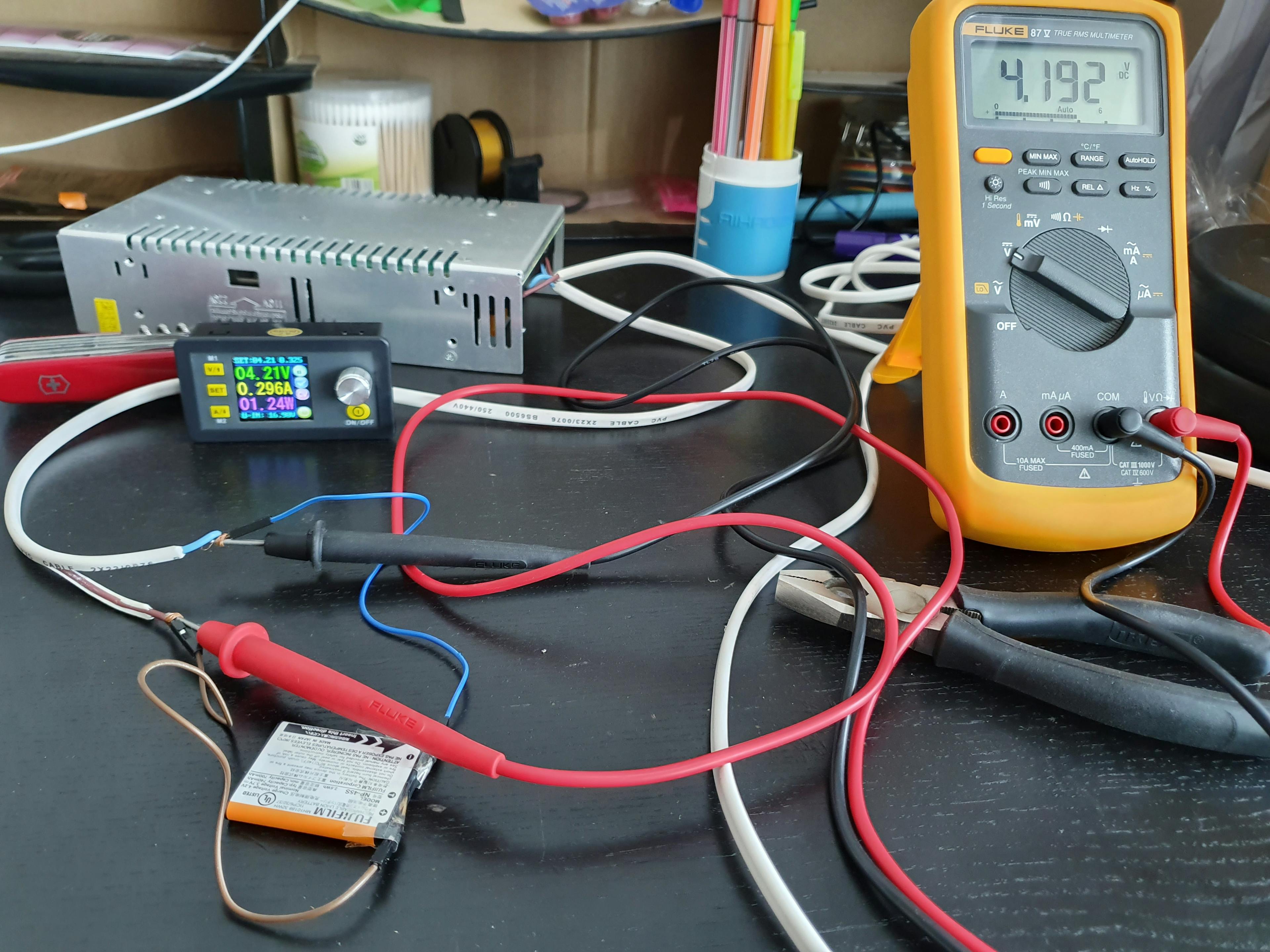Maritime is drowning in human language, and this is the first year of our lives where a solution has become possible. Let me explain.
As one of the oldest and most fragmented industries in the world, shipping operates on a steady torrent of emails, reports, responses, clarifications, summaries and regulations. Taken on their own, any one of them is a welcome addition to record-keeping and increasing safety for the customers and workers in the space. Combined into an ever-increasing flood of language that only humans can read and understand, companies are spending billions every year simply trying to keep up.
As the world globalizes further, the available time to make each decision becomes smaller - while the number of suppliers, factors and options involved in each move becomes larger. Essential information about pricing, past performance and oversight becomes buried in billions of words of emails and unprocessable PDFs - where an Excel sheet begins to feel like a breath of fresh air. Years of operational knowledge and business insights are buried every month under a new wave of communication, never to be retrieved or remembered again.
At Greywing, this is a problem that has occupied us for as long as we've existed. Every single customer has highlighted some part of this problem as a key issue, and we've tried - time and again - to find a solution, with limited success. By 2021 it was clear to us that a crucial piece was missing from the state-of-the-art in computing, but we didn't know then that 2023 would be the year it would be solved.
The missing piece was the ability for machines to understand human language in all its complexity. Up until the end of 2022, using a computer to understand the paragraphs above and make sense of them was a completely open problem. There existed no computer system, no algorithm, that could parse the ambiguity in how we speak and write.
The solution, before, was to change the way humans worked to better suit computers. We were not the first - and likely not the last - to introduce more structured data entry systems to shipping, with interfaces that more resembled computer UI than human language.
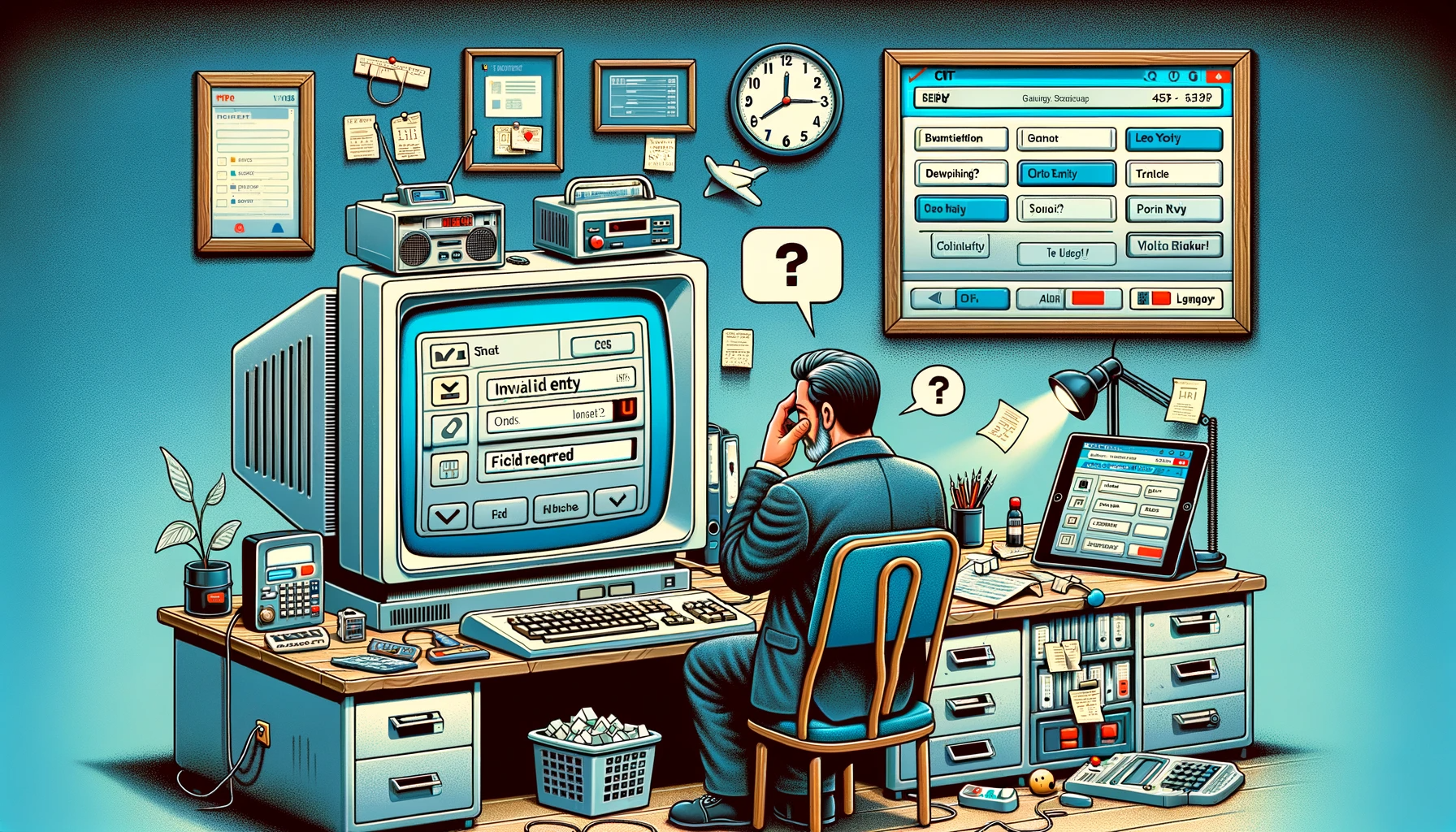
What we quickly learned was that these systems were doomed to fail from the start - due to what we termed the new standards problem. When a new workflow is introduced, early adopters are penalized disproportionately - they need to work the new way as well as the old one until all of their counterparts switch.
2023 has been different. For the first time, we have large language models - neural nets a tenth the size of our brains - that have been taught to understand, process and even generate human language. With the right mix of clean data, operational knowledge and engineering, they can be the solution to our problems. Here's an example:
{"key_sentiments":["Overwhelm","Complexity","Frustration","Hope","Determination"],"important_topics":["Maritime Industry","Communications","Emails","Reports","Language Processing","Decision Making","Operational Knowledge","Business Insights","PDFs","Human Language","Computational Limitations","Structured Data"],"time_periods_or_dates_discussed":["First year of AI solution implementation","Year 2021","Year 2022","Year 2023"],"key_technologies_discussed":["Machine Learning","Artificial Intelligence","Natural Language Processing","Data Entry Systems","Computer UI"]}
We believe that this is the beginning of the end for decades of paperwork in shipping. Early adopters here will have the opportunity to run leaner, better-informed companies that can harness their years of knowledge to scale faster and deliver a better product than the competition. Instead of slow early adoption, we believe we will see a snowball effect in the industry that changes shipping as we see it today.
§When more communication is too much communication
The maritime industry operates in a complex web of entities - shipping companies, port authorities, cargo handlers, suppliers, regulatory bodies and more. As the industry expands and becomes more global, the number of these entities keeps multiplying. Each new entity in the mix brings with it more communication and data that needs to be processed.
A single operational narrative can involve managing frequent cargo changes, dealing with new suppliers popping up daily, and keeping up with evolving regulations and compliance requirements. This all translates into an endless stream of emails, reports, forms, and messages that keeps growing exponentially.
I'm sure we can all relate to the feeling of being overwhelmed by hundreds of unread emails in our inbox. Now imagine that multiplied thousandfold, with entire teams facing this data deluge daily. Important information gets lost in the noise. That pricing sheet from a supplier last week, the quality report from the last cargo pickup, the advisory about new customs paperwork - all buried under an avalanche of data.
Without a way to structure this communication, we end up with a massive efficiency and productivity loss. Teams waste hours just sifting through emails to find what they need. Simple operational decisions take days when the data is scattered across inboxes and hard drives. Millions of dollars are likely being lost in unseen inefficiencies.
With such volumes of data to parse, the likelihood of crucial mistakes increases exponentially. When decisions rely on quick access to the right information, the absence of structure translates into lost revenue opportunities and decreased competitiveness.
The maritime industry has long needed a solution to this dilemma of when more communication bogs down operations instead of enabling them. Technology hasn't been up to the task, until now.
§Why past attempts have failed
Over the past decade, many attempts have been made to introduce structure and standardization to maritime communication. The digitization push has seen the introduction of electronic forms, standardized message formats, data entry templates, centralized data storage systems and more.
However, these solutions failed to fully take off because they didn't embrace how communication actually happens in the maritime world. Forms and templates work well in constrained environments like internal HR systems. But maritime communication is multifaceted, unpredictable, and mediated through channels like email and messaging platforms.
Legacy systems imposed a one-size-fits-all structure on this data that stripped it of the nuance and flexibility of natural language. Consequently, these systems faced very low adoption rates. Teams ended up using new tools along with old email and reports, resulting in a counterproductive dual workload.
The root cause of this failure was the inability of past technology to deeply understand the complexity and variability of human communication. Our languages have evolved over millennia into an intricate, powerful tool for conveying information. No preset template can capture this sophistication.
Past solutions also faltered because they disrupted existing workflows. Implementing new systems was expensive, time-consuming and required changes in operational habits - a hard sell for busy teams set in their ways.
The lesson is that successful adoption requires meeting users where they are, not forcing them into new behaviors and tools. The right solution must build on existing communication modes while unveiling the structure within them.
§Large language models
We believe Large Language Models are the missing piece. LLMs - like GPT-4, are large neural networks that have learned to master human language by training on vast volumes of text data.
For instance, the GPT-3 model was trained on hundreds of billions of words. This intensive training allows LLMs to parse nuanced language, interpret human intent, and generate natural text - feats impossible with the previous state-of-the-art in Natural Language Processing (NLP).
LLMs can engage in convincing conversations, answer context-based questions, and summarize lengthy text. Their innate understanding of how we communicate makes them uniquely capable of structuring maritime's unstructured data.
They are still only one piece, however. Using all of the structured information, operational knowledge and expertise we have gained over the last half-decade, we have been building solutions at Greywing where the LLM sits at the bottom of our stack - enabling an understanding of natural language.
This has allowed us to release to our customers new solutions - from simplifying complex flight searches, to invoice extraction and long-term-planning, the possibilities are only beginning to unfold.
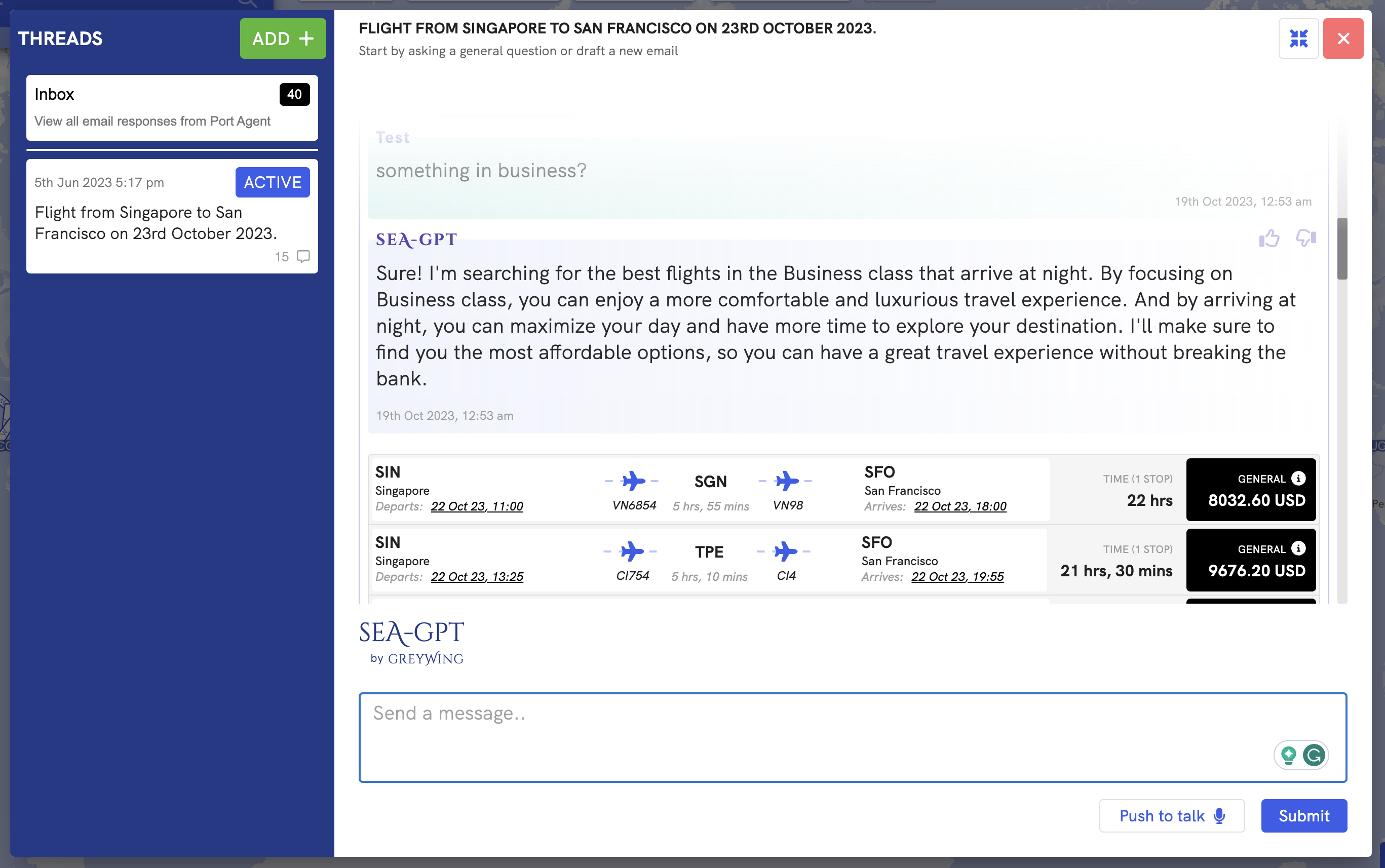
For example, SeaGPT can take a 50-email exchange about a deal and output a structured table listing the supplier name, brokers involved, agreed rate, contract duration, etc. It can do this for 1000, a million, a billion emails without breaking a sweat. Today we can extract clean price lists, reconciliation reports against final payments, and even auto-respond with clarifying questions with no human intervention.
We are also leveraging LLMs' conversational ability to build intelligent assistants that simplify workflows. Users can ask questions in plain language and get automated updates on cargo location, contract status etc., without sifting through their inbox.
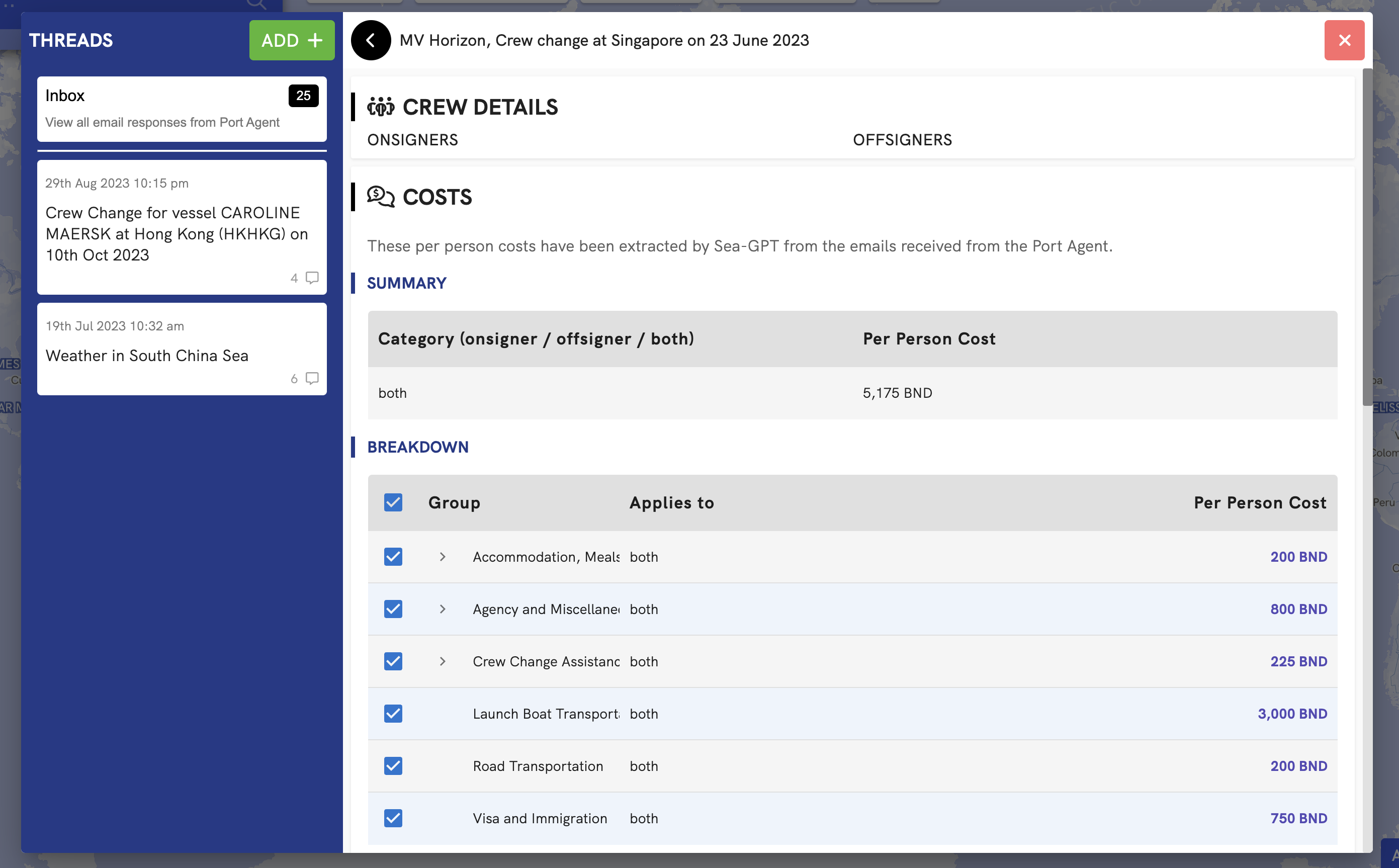
As LLMs become more powerful and secure, digitizing and optimizing maritime operations using human-centric AI will become a reality. Companies that fail to adopt early may get left behind.
§Implementing the Solution - No Disruption, Gradual Adoption
At Greywing, we are acutely aware that no matter how promising a technology, real-world adoption depends on making implementation easy. Our approach aims to deliver benefits starting day one, with minimal disruption to existing systems and processes.
Our solutions involve lightweight software modules that integrate into current platforms like email, ERPs and messaging apps. We avoid expensive rip-and-replace of legacy systems - users can interact via familiar channels. The complexity sits behind the scenes.
Rolling out our tools follows an incremental roadmap tailored to each client's environment and needs. Some modules like automated data capture from emails can go live quickly. Other capabilities like AI assistants are introduced gradually for smooth adoption.
Change management is built into the process, with extensive training resources. Users get the time and support to adapt at their own pace. We also offer hybrid options where both manual and automated systems co-exist, phasing out legacy flows over time.
With our adoption-centric approach, maritime firms can dip their toes into AI-enabled digitization without disrupting business-critical activities. The biggest change will be employees getting back hours wasted on repetitive manual work, freeing them up for higher-value tasks.
§Early adopters get the worm
History shows that companies that are quick to adopt cutting-edge technology reap exponential dividends. AI and LLMs are proving to be the next big wave. Those that ride it early will gain a competitive edge.
With Greywing's solutions, early adopters can significantly optimize operations by tapping into accumulated institutional knowledge that previously sat idle in unstructured data. Better visibility of past decisions, supplier track records, regulatory histories etc. improves planning and risk management.
First movers also benefit from flexibility. Once processes are automated, scaling becomes easier without proportional increases in workforce. Companies can expand to serve new markets and geographies much faster.
Pioneering firms are perceived as forward-thinking, tech-savvy players, helping attract talent and investment. Introducing user-friendly AI solutions also improves employee productivity and satisfaction.
LLMs represent a paradigm shift in how enterprises handle information. Transitioning early, with the right solutions, establishes market leadership. As competitors scramble to catch up, first movers solidify a competitive advantage for the long term.
§What we get for free
A key benefit of LLMs is that they easily adapt to multiple languages and input modes without added effort. This means maritime firms get multilingual, multimedia communication capabilities built into solutions like SeaGPT.
Our AI assistant understands speech and text across 15+ languages out of the box. Users worldwide can interact naturally, avoiding language barriers. As international operations expand, ensuring accessibility and seamlessness across geographies is effortless.
Multimedia support allows integrating data beyond text - images, tables, voice messages get seamlessly handled. For instance, users can ask questions and input data via voice chat that SeaGPT converts into actionable datasets.
No prior training in "computer-speak" is needed - the human-AI interaction mirrors natural conversation. This intuitive interface maximizes adoption across roles and regions.
The bottom line is that by harnessing LLMs' universal language skills, maritime companies can easily achieve true global connectedness. Managing international crews, suppliers and customers becomes vastly more efficient.
§What the future holds
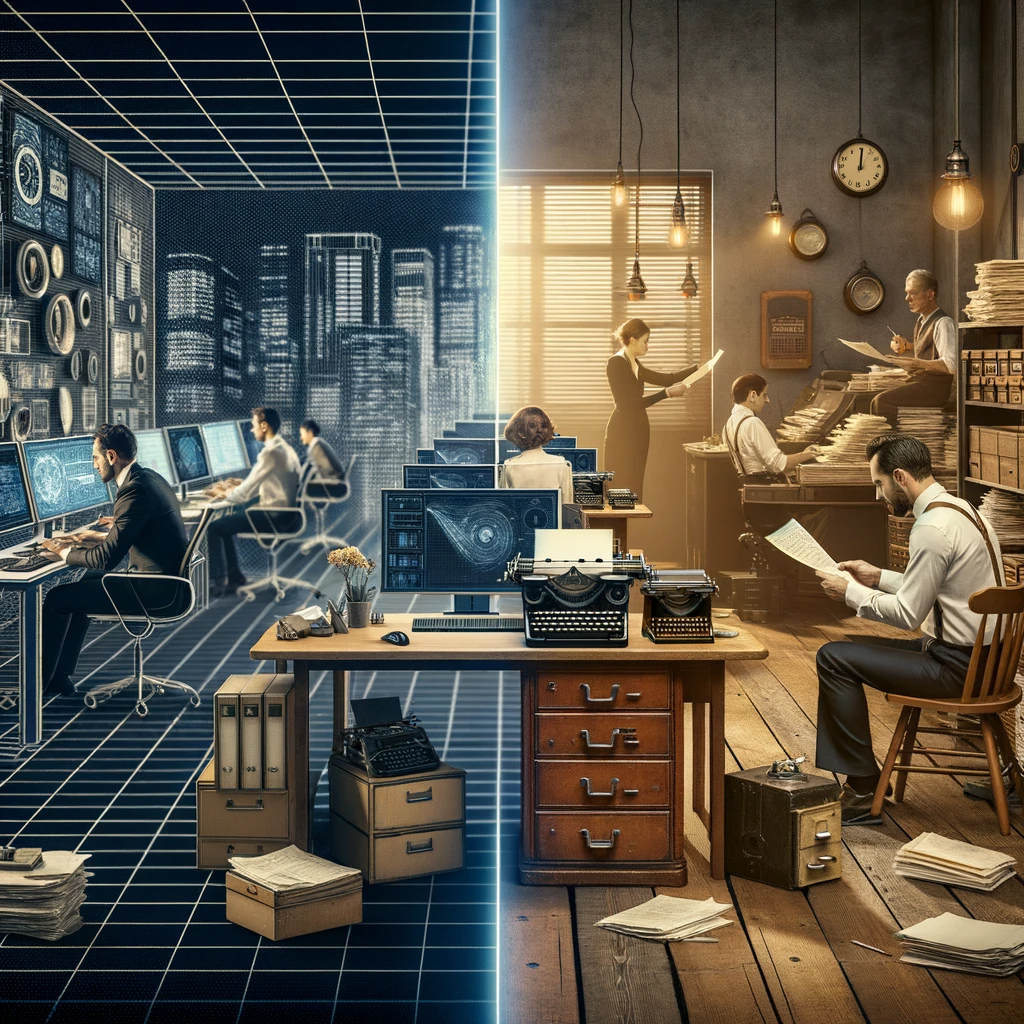
When truly transformative technology becomes accessible, it's hard to imagine how things will change - only that they absolutely will. The release of GPS to consumers was a similar moment - it would have been hard to predict Uber, Doordash and the creation of the gig economy from that final piece being unlocked: accurate location finding and routing anywhere in the world.
Today, large models from big providers are pushing the limits of non-human intelligence, while smaller open-source models are making their way into conversational interfaces, with the promise of complete privacy and safety.
At Greywing we imagine that both will become important. Small models will embed themselves into our computers to help us access information quickly, and to serve as the first point of contact to our industry. Large models will enable long-term planning, with more situational awareness. Intelligent assistants will augment human capabilities and help build institutional wisdom.
Change will likely be gradual but inevitable - digital-first competitors will reap early benefits, but today's cutting edge is tomorrow's norm. The maritime industry has the opportunity to direct this change by adopting AI thoughtfully.
We are still in the early days of unlocking the sea of trapped knowledge in unstructured communication. Language is humanity's interface with the world - by mastering it, AIs like SeaGPT can make that world seamlessly accessible.
Not a newsletter


